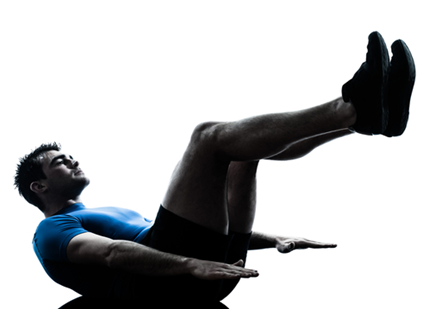Core Strength
Joseph Pilates first coined the phrase ‘core strength’ to describe all the muscle groups in our mid section – inner and outer abs, inner and outer obliques, lower back muscles, glutes, and the iliopsoas. He discovered that 3 of these muscle groups are virtually ignored by every exercise method – the inner (transverse) abdominals, inner obliques, and iliopsoas. When these muscles are strengthened everything changes from athletic performance to the movements of everyday life. We are stronger, leaner, lighter, and more balanced. Best of all, most back problems disappear!
Eccentric Contraction
‘Eccentric contraction’ is one of several ways that the body builds muscle. Pilates is unique in its emphasis on ‘eccentric contraction.’ It creates long and lean muscle tissue which is equally as strong but with less risk of injury. This is why professional athletes include Pilates in their training programs. And for the non-athlete, everyday movement becomes easier, such as walking, standing, lifting, and sitting.
Joint Health

So many exercise programs involve wear and tear on our joints such as hiking and jogging to name a few. Pilates is different! Controlled and fluid movement is a hallmark of this method. This kind of movement protect our joints. There is no wear and tear. Best of all, there is no better antidote to joint stiffness and pain than exercise, even for arthritis sufferers. Research shows that strength training such as Pilates is as effective as medication for most joint pain. I’m now 60 and with just a couple minutes of Pilates exercise in the morning, my stiffness and joint pain disappear!
Increased Energy
You’ll be surprised and delighted by increased energy and vitality following a Pilates workout. No more exhaustion so typical of a rigorous workout. This energy is the result of an unusual emphasis on breathing. Joseph Pilates seemed to know, long before science confirmed it, that breathing is key to the health of every cell and function of the body.
Complete Workout
Research has found that the body needs three different kinds of exercise: strength training, stretching, and cardiovascular conditioning, popularly known as aerobics or cardio. The most surprising finding of all is that any one of these alone will not keep you healthy. For instance, aerobics is essential for heart health, but it does not build muscle. By age 30 men and women alike begin to lose muscle all over the body. Only strength training restores muscle. And muscle protects all of our joints. Pilates is one of the few exercise techniques that combines all three into one quick workout.
No Equipment or a Gym
All you need is a bit of space the length of your body, a soft surface, and 30 minutes! You’re not restricted by gym hours, class schedules, or expensive fees. Best of all, no equipment is needed. You join the latest fitness trend by using your own body for resistance.

A Quick Workout
Pilates emphasizes only a few repetitions for each exercise – generally 3-5. You move from one exercise to another – more than 50 – without stopping, for a complete and rigorous workout in only 30 minutes.
Mind/Body Integration
This is another unique feature of Pilates – connecting body and mind. We slow down movement and coordinate it with breathing. We move precisely and fluidly. We even shut off the music and take off the earphones, at least in the beginning, to pay more attention to body sensations. This attention reduces the risk of injury and creates a new relationship with our body. Instead of the typical exercise attitude of ignoring or fighting the body, we engage in a partnership of listening to the body and respecting it. We’re greatly rewarded with new strength, flexibility, vitality, and balance.
Relief for Most Back Problems
Joseph Pilates discovered that most back problems are the result of weak abs rather than a weak back. His recommendation, which is now standard practice among physical therapists, is core strengthening exercises. Research shows that exercise is the best medicine for most back problems.
A Safe Workout
I wasn’t sure Pilates would work for my back problem, but I gave it a try. Soon I discovered the genius of Pilates. I strengthened muscles I never knew I had. Tight areas of my body became flexible. I felt new levels of balance and poise so striking that others noticed it as well. Most importantly, I began to move in new ways that no longer aggravated my back.
Dynamic Stretching
Pilates involves a particular kind of stretching known as 'dynamic stretch.' It is stretching while you move in contrast to ‘static stretch’ achieved by holding a position as we do in yoga. A third kind of stretching known as 'ballistic stretch' or bouncing is universally discouraged due to the high risk of injury. Research shows that dynamic stretch achieves greater range of motion with less discomfort in a shorter period of time.
So sign up for more information on the many Flavours tours today and discover the incredible wonders of Pilates in pilates holidays.
Bob Hannum is an Advanced Certified Pilates instructor specializing in the original mat method for over 35 years. His teacher is the Pilates ‘Elder’ Mary Bowen. He is the author of numerous Pilates instructional books and videos available at Amazon, Barnes & Noble, iBooks, and his popular website PilatesLessons.org. He provides free daily Pilates news and inspiration on Facebook. You can also visit him at Pinterest and Youtube.
.jpg)




No comments:
Post a Comment